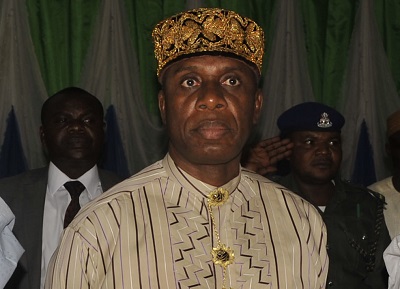 Export of electricity to two neighbouring countries, Niger and Benin Republics, from Nigeria is expected to increase to 1,540 megawatts by 2025 from 387MW in 2020, according to a document seen by our correspondent.
Export of electricity to two neighbouring countries, Niger and Benin Republics, from Nigeria is expected to increase to 1,540 megawatts by 2025 from 387MW in 2020, according to a document seen by our correspondent.
The document, entitled: ‘Transmission Expansion Plan’, which was obtained from the Ministry of Power, Works and Housing, revealed that 780MW and 760MW would be exported to Niger and Benin, respectively by 2025.
According to the document, between 1973 and 2015, peak electricity generation in Nigeria was increased from 385MW to 4,884MW, reflecting an average growth rate of about 6.3 per cent.
It noted that peak generation reached 4,883.9MW in 2015 and peak output reached 5074.7MW on February 2, 2016.
The document read in part, “Presently, the produced energy cannot cover the demand. Main reasons for shortage of generation are outages of generation units and the unavailability of gas for power generation.
“The gas supply is very often interrupted because of sabotage of pipeline network. The main concern for the future expansion of generation, however, is the availability of gas for additional generation capacity and the expansion of the gas pipeline network. Currently, most of the power plants are installed in the southern part of Nigeria close to the oil and gas fields.”
It said based on provided information, the already installed gross power generation capacity stood at about 13,300MW, of which some 11,800MW were noted as net available capacity.
According to the document, considering the latest information by the generation companies, about 9,500MW (80 per cent) of this capacity should have been available at the end of the year 2015, but only 5,900MW net capacity has been available as statistics of the National Control Centre show.
It added, “Reasons for unavailability are: planned outages for maintenance or forced outages due to technical deficiencies of assets, as well as unplanned unavailability due to shortage of fuel supply or sabotage of gas pipelines.
“A further analysis of provided information shows that about 20 per cent of installed generation capacity is based on plants, which are 25 years old or even older. Some of these plants have an efficiency of less than 30 per cent. It is obvious that most of the old thermal power plants are, or will be causing more frequent forced outages or long term planned maintenance outages in the near future.”
The report noted that the old plants should be replaced by new facilities with higher efficiency, adding that some of the generation companies had already started the modernisation process during the past 15 years.
It sated, “The availability of gas is the most uncertain factor in the generation development. A large quantity of the present gas production is exported. To make more gas available for electricity generation huge investments in gas exploration, gas treatment facilities and gas supply systems (pipelines, etc.) will be required.
“Also, the planned measure for rehabilitation and replacement of existing generation capacity at the end of the economic lifecycle will require huge investments. In 2020, the total generation required to meet the load in Nigeria is 10,700MW and since the generation from new power plants that are envisaged to be in operation by 2020 is limited, the existing generating units, which are currently out of service for various reasons, must be made available if 10,000MW of load is to be served.”







